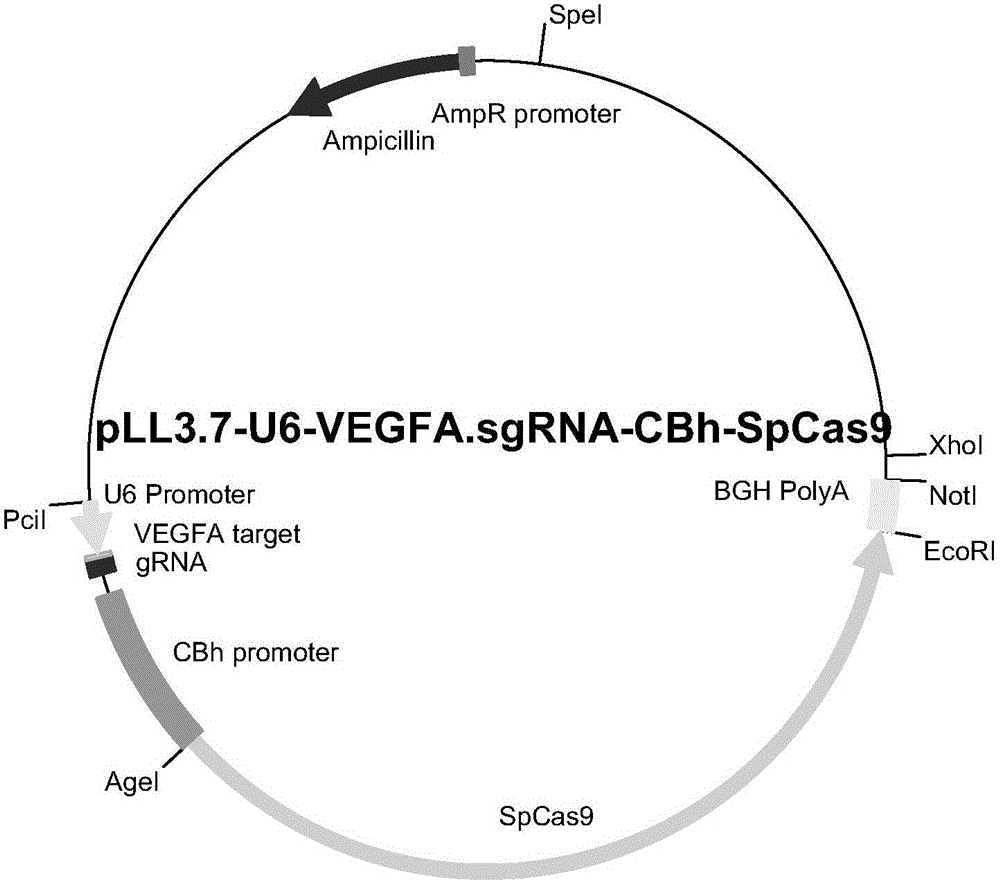Visual cell repair efficiency reporting system based on artificial nuclease and establishing method of system
A technology for reporting systems and repairing efficiency, applied in biochemical equipment and methods, nucleic acid vectors, and the use of vectors to introduce foreign genetic material, etc.
- Summary
- Abstract
- Description
- Claims
- Application Information
AI Technical Summary
Problems solved by technology
Method used
Image
Examples
Embodiment Construction
[0039] In order to make the technical solution of the present invention easy to understand, the following uses yeast-derived Rad52 protein (abbreviated as ScRad52) and CRISPR-Cas9 to edit human VEGFA gene, and detects the embodiment of ScRad52 improving the efficiency of HR after CRISPR-Cas9 targeting, for the present invention For further details.
[0040] 1. Target site selection
[0041] Based on the characteristics of the target sites of the CRISPR / Cas9 system, the target sites containing PAM (NGG / NGGNG) were searched in the genome. After screening on the CRISPR Dsign website (http: / / crispr.mit.edu / ), the following site was selected as the VEGFA target site (VEGFA target): CTCGGCCACCACAGGGAAGC (see SEQ.ID.NO.1, 5 from the left `end)
[0042] 2. Construction of CRISPR / Cas9 expression vector (pLL3.7-U6-VEGFA.sgRNA-CBh-SpCas9)
[0043] The CRISPR / Cas9 expression vector was transformed and constructed in our laboratory, that is, the sequence of the sgRNA capable of expressi...
PUM
 Login to View More
Login to View More Abstract
Description
Claims
Application Information
 Login to View More
Login to View More - Generate Ideas
- Intellectual Property
- Life Sciences
- Materials
- Tech Scout
- Unparalleled Data Quality
- Higher Quality Content
- 60% Fewer Hallucinations
Browse by: Latest US Patents, China's latest patents, Technical Efficacy Thesaurus, Application Domain, Technology Topic, Popular Technical Reports.
© 2025 PatSnap. All rights reserved.Legal|Privacy policy|Modern Slavery Act Transparency Statement|Sitemap|About US| Contact US: help@patsnap.com



